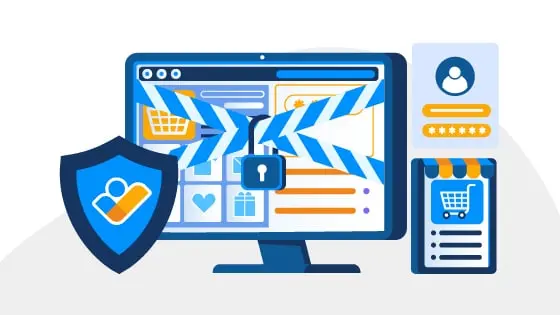

Chargeback fees can cause serious financial damage and also threaten your business’s reputation. Chargebacks do not only refer to returned merchandise or lost sales; the true cost of chargebacks lie in fees that are tied to them.
Typical chargeback fees range from $20 to $100. Add in the customer acquisition and operation costs (stocking, storing, packing, and shipping) and your business ends up losing almost three times the transaction amount.
Therefore, it is crucial for you, as a merchant, to take preventive measures to reduce the instances of chargebacks fees. Here’s how you can stay ahead:
Stay Chargeback Monitoring Radar
One resource large retailers have is the chargeback monitoring program. This is VCMP or Visa’s effort to keep tabs on your chargeback activities. Visa will audit your business outlet to highlight if you, as a merchant, are generating too many chargeback disputes.
The idea is to help you manage and control chargebacks while Visa protects their brand name. VCMP identifies merchants who exceed the chargeback thresholds and help them assess fraud controls, reduce chargebacks, and review their operations.
However a responsible and proactive first step is to join a chargeback monitoring program. Being on a VCMP is like being on probation, as it means Visa sees your business as a risky organization. They are not calling you a fraud but not ruling it out either.
If you end up on a VCMP, you will have to work with your acquirer to develop a chargeback mitigation plan that will most likely include the following:
- You will have to operate on a high-risk merchant account and pay higher chargeback fees.
- You will have to go under regular review by Visa, which includes a 25,000 USD review every six months.
Staying on a chargeback monitoring program for too long may cost you losing your processing account and barred from processing Visa cards permanently. Therefore, as a merchant, do your best to reduce your chargeback instances and stay off the radar when it comes to chargeback monitoring programs.
Provide Detailed Product Descriptions
One of the most common types of chargeback disputes is “product not as described.” Many times consumers will ask their banks to initiate chargebacks because they were apparently misled about the product. The product they received looks different from how it appeared online or on TV, or it does not perform the function the customers were led to believe it does.
However, it is not always true, and fraudsters use “product not as described” as a false excuse to get their money back as the bank will have no reason to doubt their customers’ claim.
As a business, the best way to prevent such chargeback disputes is to offer detailed product descriptions. This way, you dispute the consumer’s chargeback claim.
Clear and Concise Refund Policy
A refund policy defines and dictates the terms offered by your business when returns and refunds occur. The idea is to explain how your business deals with return or refund requests. So what information should you include in a refund policy? There are three basic points that most businesses should focus on:
- What time frame does your company offer a customer to return the product? For instance, a customer can return a product within 15 days or 30 days of purchase, etc.
- What type of refund will your company provide? For example, whether you will provide a full refund or you will only refund in the form store credits etc. In case of returns, you can take a stricter stance and only offer a replacement, not a refund, etc.
- Who pays for shipping? When dealing with the physical return of the product via courier, you must state if you will be covering the shipping cost or the customer will have to bear that charge. If you are offering to bear the shipping costs, will you send a prepaid shipping label or reimburse the cost when settling the refund, etc.
The three-pointers mentioned above are must-have elements of every refund and return policy. Therefore, be thoughtful and thorough when outlining and defining your refund policy.
Set Up Chargeback Alerts
It is always a good idea to set up chargeback alerts with your bank. This way, you will get a notification about a chargeback dispute in its initial filing phase. Getting early alerts in the process allows businesses to fight the chargebacks before they incur any chargeback fees.
Here are the most prominent chargeback alert systems:
- Online Alert Portal – this system allows you as a merchant to sign-in to a portal to view and manage any chargeback disputes initiated against your business on a user-friendly dashboard.
- Application Programming Interface (API) – this system can be integrated into your existing merchant system. The primary benefit of the API system is no-hassles of additional sign-ins, and you can integrate it into your POS or order fulfillment system. Your business is better off using this solution as it offers automation of steps within the chargeback process to streamline your workflow.
Catch Fraud Early
Intellicheck has go-to solutions for businesses dealing with both in-person and online transactions. Intellicheck’s diverse suite of fraud prevention tools offer chargeback fraud prevention solutions that will save your business from unnecessary chargeback fees.
Moreover, Intellicheck solutions are easy-to-use and offer flexible integration into your existing POS system. Not only will it save you time and money, but also help you reduce the risk of missed fraudsters.
Ready to safeguard your business from chargeback frauds and chargeback fees?







